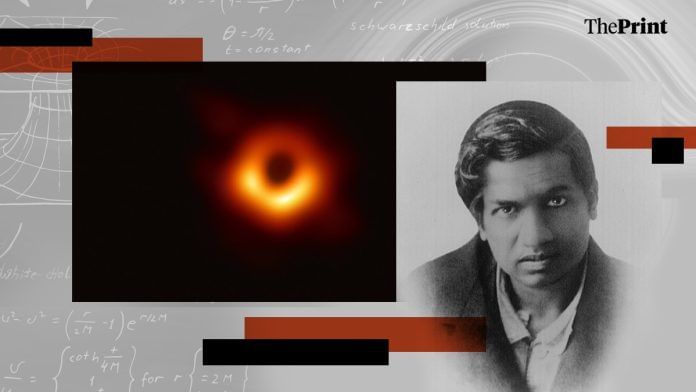Bengaluru: A formula on pi (π) written by Indian mathematician Srinivasa Ramanujan 111 years ago matches with modern-day physics that describes black holes, swirling fluids and the expanding universe, a study by researchers at the Indian Institute of Science (IISc) has found.
In the study, Professor Aninda Sinha and his former PhD student Faizan Pervaiz Bhat at IISc’s Centre for High Energy Physics (CHEP) found that Ramanujan’s formula for calculating pi—developed in 1914, before quantum mechanics was formally formed, holds information about fundamental physical phenomena.
“If you look at Ramanujan’s paper, you will see that there are no intermediate details whatsoever. He just presents these formulas. One of the questions that we wanted to figure out is — is there a physics way of thinking about these formulas, the starting point of these formulas,” Sinha said.
The paper, currently available on pre-print repository arxiv, has been accepted for publication in the journal, Physical Review Letters.
The paper Ramanujan wrote in 1914—the year he left India for Cambridge—presented 17 formulas for pi, with most of the calculations done by hand on his characteristic slate, Sinha said.
The equations, mathematicians Thang Pang Ern and Devandhira Wijaya Wangsa noted in another arxiv paper, were then presented by Ramanujan without proof.
The formulas
In calculating pi (3.14159… or 22/7), most mathematical equations would add a few accurate decimal points with each step of the formula – like every step on a staircase helps get closer to the top.
But Ramanujan’s formulas are extraordinarily efficient. Co-authors Sinha and Bhat found that in Ramanujan’s formula, a single calculation can instantly give eight correct decimal points – like an escalator that glides to the top.
The physics connection
Researchers found that Ramanujan’s mathematical series structure emerges in Conformal Field Theories (CFTs) — a class of quantum theories used to describe complex physical systems.
For instance, the exact moment when water turns into steam involves complicated physics. CFT, in this case, would be the mathematical language that physicists can use to describe this transformation.
The connection, according to the study, extends to specific black hole physics and cosmological models related to accelerated expansion of the universe.
But the research wasn’t straightforward.
When Sinha first opened Ramanujan’s paper, he couldn’t make sense of it because it used old mathematical notations for some functions. Sinha had to go through additional literature to understand the meaning of these notations.
“It was in review work that we found that this (formula) has exactly the structure that we are familiar with from conformal field theory,” he said.
Real-world application
Sinha and Bhat explained that Ramanujan’s century-old formula provides a faster method for calculating physical phenomena.
“Once we establish this connection to logarithmic CFTs, we notice that logarithmic CFTs arise in several systems in some special limits. You can think of a black hole or percolation or turbulence. What we have basically learned from Ramanujan’s formula is that there is a certain way of writing these observables in these LCFTs, which converge really fast,” Bhat said.
Percolation describes the process in which a liquid seeps through a solid (water through soil, for instance). Turbulence describes the chaotic swirling of an element. For example, the chaotic movement of air that causes aeroplane bumps.
How quickly a formula reaches the answer – called faster mathematical convergence – can help calculations in physics.
“There’s some physics connection behind these remarkable mathematical stories,” Sinha said, adding that the study shows how mathematical frameworks often find applications in physics after a “phase lag”.
(Edited by Prerna Madan)
Also Read: Srinivasa Ramanujan, self-taught mathematician whose genius survives more than a century on






